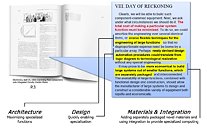
AMD CEO Lisa Su Notes: AI to Dominate Chip Design
Artificial intelligence (AI) has emerged as a transformative force in chip design, with recent examples from China and the United States showcasing its potential. Jensen Huang, CEO of Nvidia, believes that AI can empower individuals to become programmers, while Lisa Su, CEO of AMD, predicts an era where AI dominates chip design. During the 2023 World Artificial Intelligence Conference (WAIC) in Shanghai, Su emphasized the importance of interdisciplinary collaboration for the next generation of chip designers. To excel in this field, engineers must possess a holistic understanding of hardware, software, and algorithms, enabling them to create superior chip designs that meet system usage, customer deployment, and application requirements.
The integration of AI into chip design processes has gained momentum, fueled by the AI revolution catalyzed by large language models (LLMs). Both Huang and Mark Papermaster, CTO of AMD, acknowledge the benefits of AI in accelerating computation and facilitating chip design. AMD has already started leveraging AI in semiconductor design, testing, and verification, with plans to expand its use of generative AI in chip design applications. Companies are now actively exploring the fusion of AI technology with Electronic Design Automation (EDA) tools to streamline complex tasks and minimize manual intervention in chip design. Despite limited data and accuracy challenges, the "EDA+AI" approach holds great promise. For instance, Synopsys has invested significantly in AI tool research and recently launched Synopsys.ai, the industry's first end-to-end AI-driven EDA solution. This comprehensive solution empowers developers to harness AI at every stage of chip development, from system architecture and design to manufacturing, marking a significant leap forward in AI's integration into chip design workflows.
The integration of AI into chip design processes has gained momentum, fueled by the AI revolution catalyzed by large language models (LLMs). Both Huang and Mark Papermaster, CTO of AMD, acknowledge the benefits of AI in accelerating computation and facilitating chip design. AMD has already started leveraging AI in semiconductor design, testing, and verification, with plans to expand its use of generative AI in chip design applications. Companies are now actively exploring the fusion of AI technology with Electronic Design Automation (EDA) tools to streamline complex tasks and minimize manual intervention in chip design. Despite limited data and accuracy challenges, the "EDA+AI" approach holds great promise. For instance, Synopsys has invested significantly in AI tool research and recently launched Synopsys.ai, the industry's first end-to-end AI-driven EDA solution. This comprehensive solution empowers developers to harness AI at every stage of chip development, from system architecture and design to manufacturing, marking a significant leap forward in AI's integration into chip design workflows.










